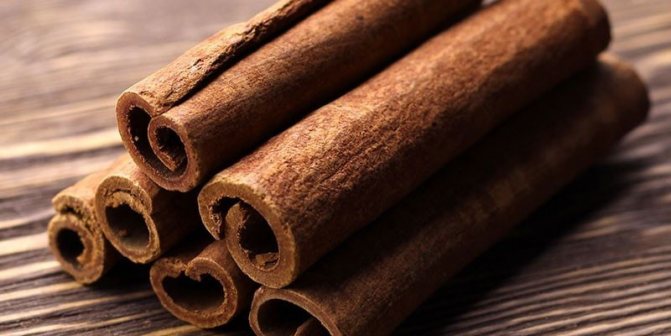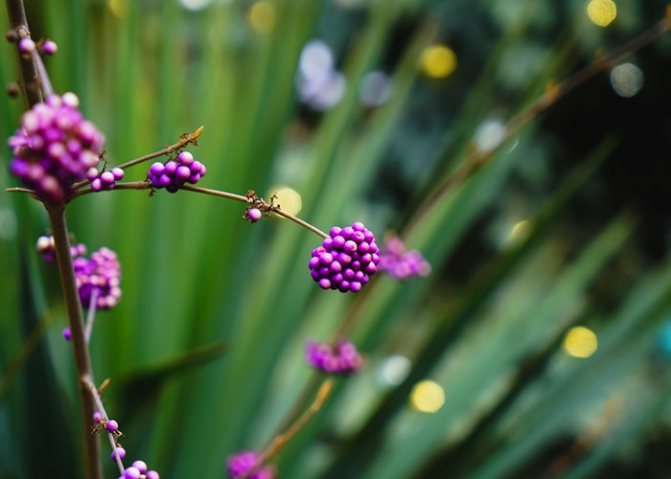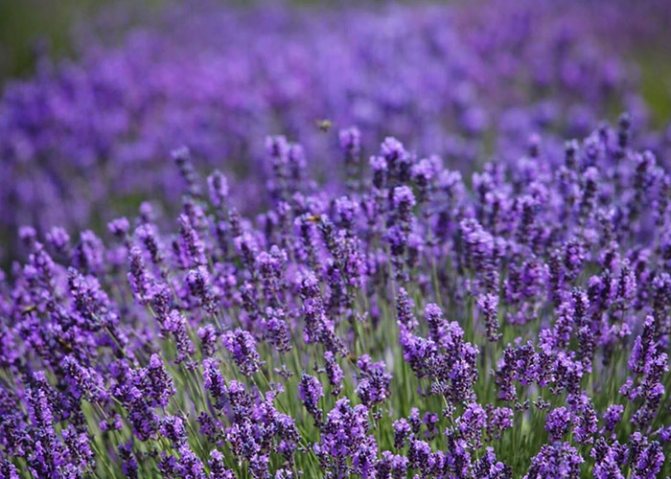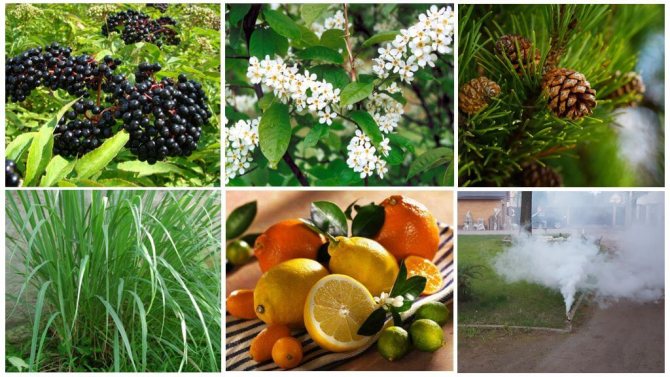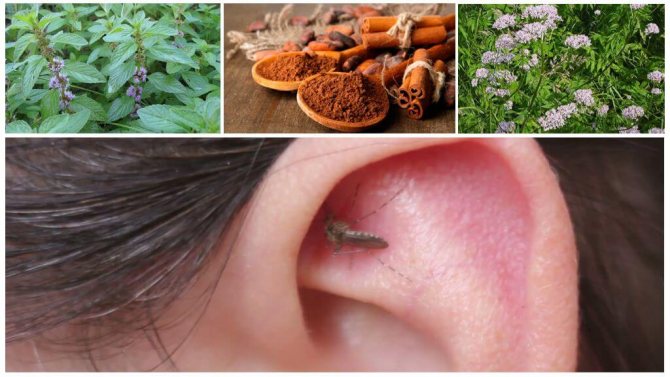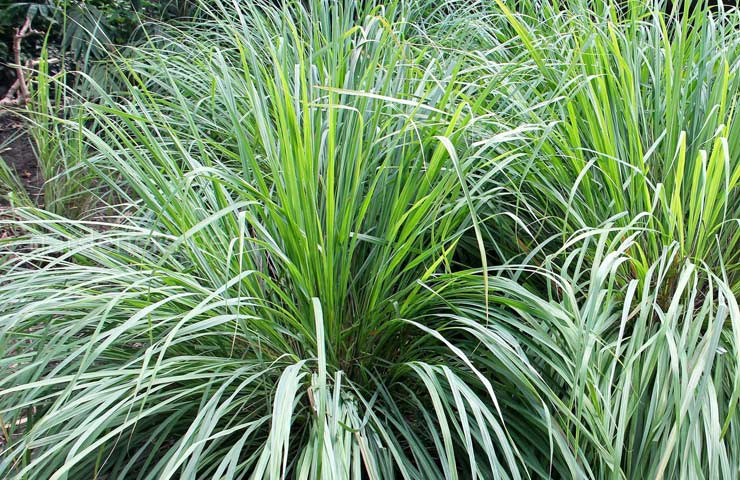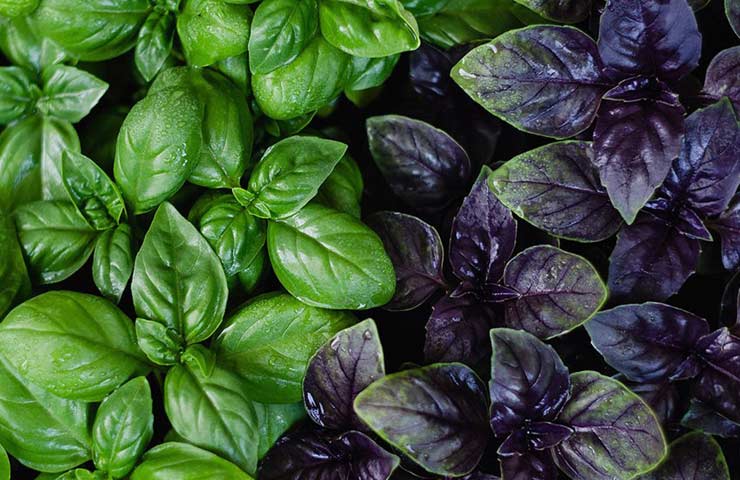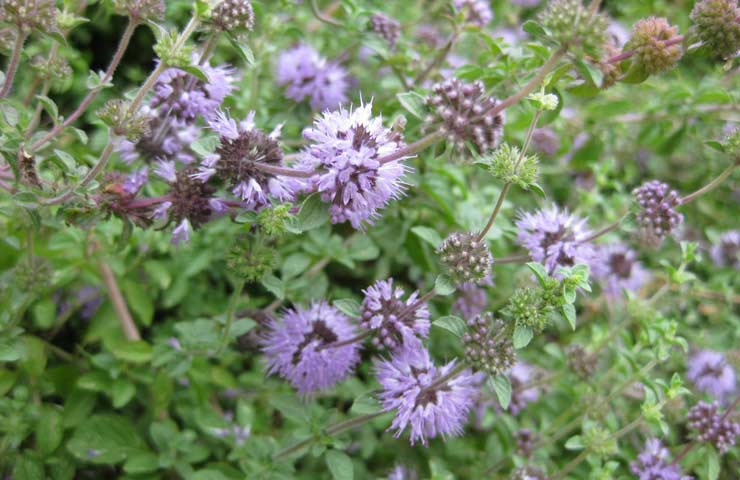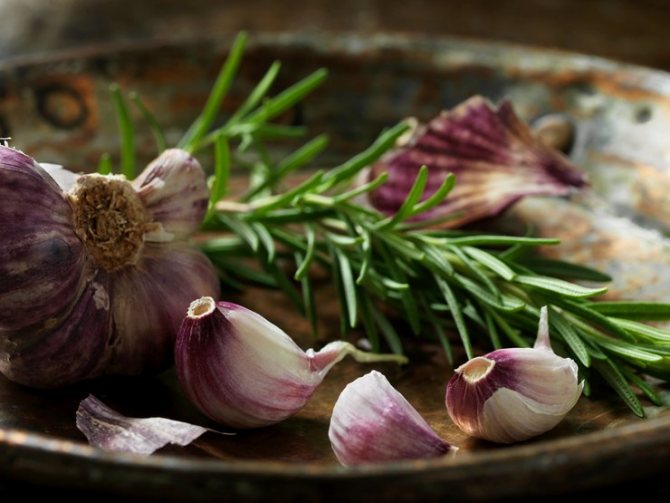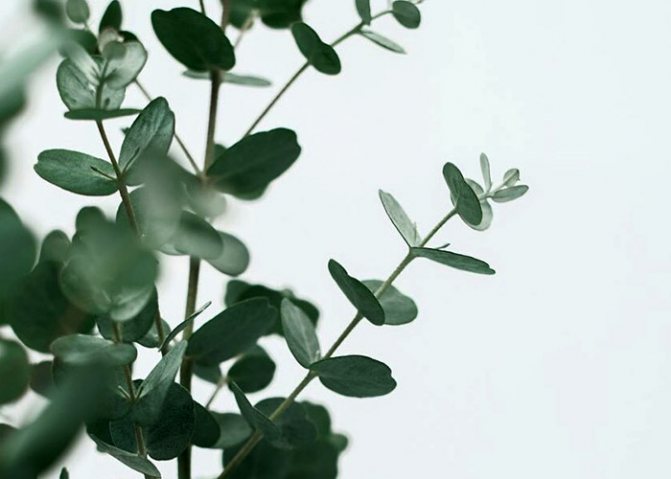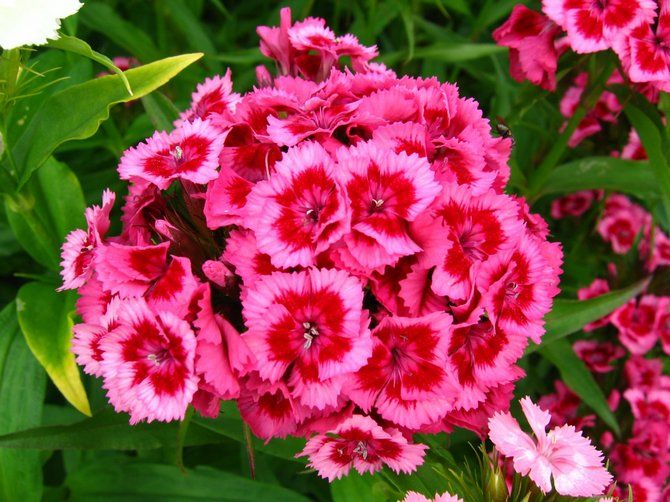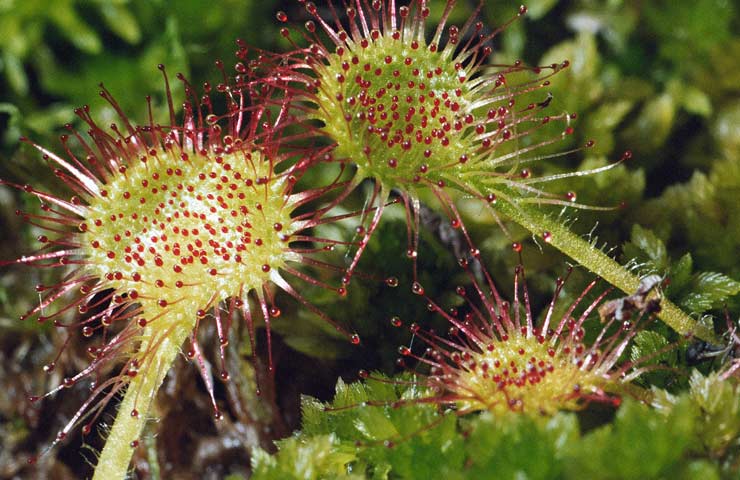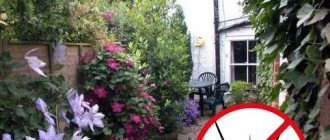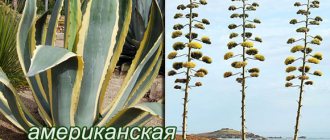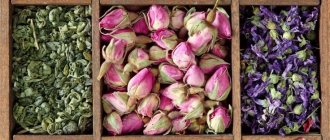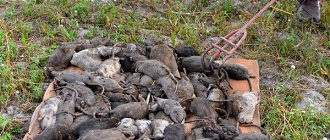
Every summer, a variety of insects begin to fill the dwelling houses, such as mosquitoes, flies, small fruit flies and many others. Some of them are completely safe. But mosquitoes can carry very serious diseases inside them, which can be fatal.
Most often, it is children who suffer from the bites of these insects, so the question immediately arises in the head: "What smell are mosquitoes afraid of folk remedies"?
Ageratum
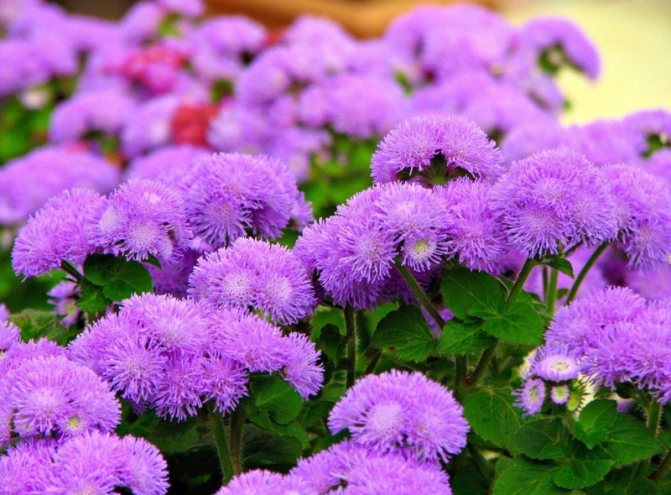

Most store-bought repellents contain coumarin, which is also found in ageratum. This is a bushy ornamental plant. Its flowers are blue, lilac, pink and white. They will reliably protect the space from annoying mosquitoes.
However, it is not recommended to try to rub the skin with this plant for added protection, as an allergic reaction may occur. It's best to just plant a few flowers in any suitable spot. Ageratum is not capricious and can grow on any soil, under the scorching sun or in the shade.
What is the compatibility of repellents
Before planting repellent plants, it is necessary to study the compatibility:
- marigolds get along well with roses and gladioli, and you can also plant potatoes, strawberries, tomatoes nearby;
- peppermint is compatible with peppers and tomatoes;
- thyme - cabbage;
- calendula is allowed to be placed with tomatoes and strawberries;
- rosemary gets along well with cabbage, onions, legumes;
- garlic can be combined with legumes, onions, potatoes, strawberries, tomatoes.
Plants - repellents help get rid of many insects, including mosquitoes. But, their effectiveness depends on the environmental factor. For example, a light wind can direct the smell in the other direction, and the effect is reduced, therefore, together with plants - repellents, other methods of protection can be used.
Narrow-leaved lavender


This flower will decorate any suburban area. It is a perennial plant with needle-like leaves and delicate blue, purple, pink and white flowers. She is not picky, tolerates winter well in the middle lane, will grow on poor soil and will not require frequent watering.
It is good to plant it in group plantings or grow in boxes and containers. The smell of the plant does not bother a person. A light scent is only felt when touched or pruned. Mosquitoes find its aroma stronger, they cannot stand it and do not fly nearby.
Lantana
Lantana flowers are so potent against mosquitoes that the journal of the American Mosquito Control Association published it (yes, there is such a magazine).
“Lantana flower extract in coconut oil provided 94.5% protection against Aedes albopictus and Ae mosquitoes. Aegypti ".
In fact, this drug protected mosquitoes for an average of two hours, with no side effects for humans. An added bonus is that lantana flowers grow so easily in warm, sunny locations and also attract butterflies.


Photography - instagram
Peppermint


This is the most famous and popular medicinal plant that is grown in summer cottages. It is often used in cosmetology and cooking.
Since ancient times, people have raised it near windows and doors, mainly because it keeps mosquitoes out of the house. The menthol smell is excellent for repelling insects. The strongest aroma comes from mint grown in fertile loose soil under the sun. It will grow well and perform its functions in the shade, but the effect will be slightly weaker.
Rosemary
People have used rosemary as a natural pest control for years as insects wary of its pungent scent. Rosemary-infused grill smoke is especially effective at keeping mosquitoes off the street, and it will also serve a dual purpose to the flavor of your meat.


Photography - instagram
Lemon mint
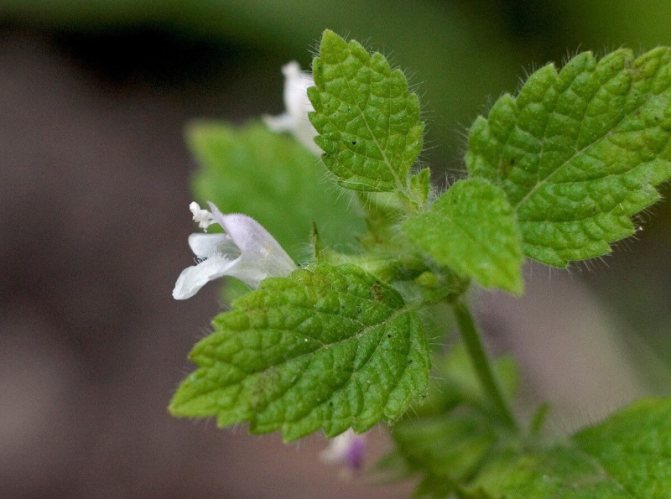

Lemon mint or lemon balm is another popular herbal remedy. Many people like to brew tea from it, because the drink acquires a lemon-mint refreshing taste and smell. Due to its beneficial properties, the flower is often used in cosmetology.
It also repels mosquitoes very well. The plant is unpretentious, will not require constant attention and grows quickly. If you plant it on a windowsill, lemon balm will become a wonderful home decoration and fill the room with a lemon scent. Thanks to this, not a single mosquito will dare to fly into the apartment.
What smells bloodsuckers do not tolerate
There are many proven products, oils and preparations, the aromas of which can scare away vile insects at home.
| Plants | Other means |
| The lavender grown in the garden will scare away bloodsuckers from the house, and the herbarium will help get rid of them indoors, giving a wonderful scent to the owners. | Camphor repels most insects well, but it has a big disadvantage in the form of an unpleasant odor. Recommended for outdoor use. |
| Melissa repels mosquitoes by having a scent similar to mint and lemon. You can grow the plant on a windowsill or rub the leaves on the skin. | Formic acid. Any strong smells scare away bloodsuckers, and sour aromas are even stronger. You need to take off a T-shirt or sweater and put it on the anthill, after it becomes a little damp, shake off all the ants and put it on your body, covering your nose. You can apply some acid to exposed areas of the body. |
| Citronella is a herb with a citrus scent. In order to scare away insects, it is necessary to squeeze a few drops from a fresh plant into an aromatic lamp. | Alcohol, especially ammonia. The flap of fabric is moistened in alcohol, and then all surfaces in the room are processed. Particular attention is paid to doors, windows and windowsill. This treatment will be effective throughout the night. |
| Eucalyptus makes it difficult to find a victim due to its strong scent. It is effective not only against mosquitoes, but also against gnats and ticks. | Strawberries are considered the "grandfather" method. In order to protect yourself from mosquito bites, you just need to smear fresh berries on open areas of the body. |
| Rosemary isn't just perfect for cooking. It attracts butterflies and repels mosquitoes. Rosemary oil can be added to insect sprays. | Apple cider vinegar is diluted with water in a 1: 1 ratio and sprayed onto bare skin. |
| Lemon catnip or catnip repels mosquitoes 10 times more effectively than insect repellents. | Frankincense is also able to scare away mosquitoes, though not for a long time. And the aroma must be constantly in the room in order to have an effect from it. |
Sage
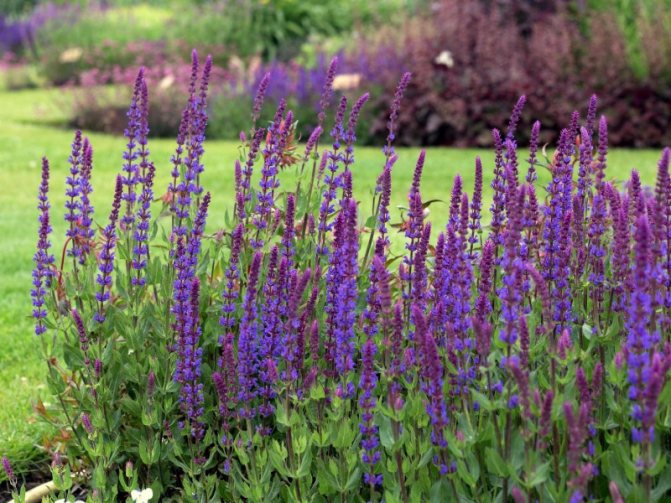

Even Hippocrates called sage “sacred herb”. It is widely used in medicine and is used in the treatment of many diseases. Gardeners also noted that the grass effectively wards off blood-sucking insects. And all thanks to the tart aroma that prevents mosquitoes from detecting human odor.
This is a perennial plant that can grow in one place without transplanting for up to 8 years. He likes soil with neutral acidity and good lighting.
Danger of mosquitoes to humans
Mosquitoes cannot be called harmless insects, since under favorable conditions they can be carriers of various diseases - tularemia, yellow fever, helminthiasis, hepatitis B and C, Lyme disease and others. Fortunately, in our latitudes, such mosquitoes do not tolerate such infections. But besides this, during a bite, a mosquito launches saliva into the wound, which prevents blood from clotting. This saliva often causes an allergic reaction. Swelling and itching usually appear at the site of the bite. People with asthma may have attacks of asthma.
Some people have mosquito allergy, which is accompanied by fever, headache, difficulty breathing, severe swelling, and blisters appear at the site of the bites. With numerous bites, suffocation, Quincke's edema, nausea and vomiting are possible. There are cases when a person has anaphylactic shock.
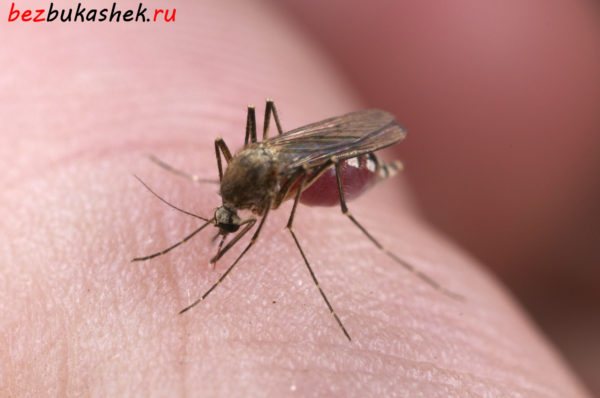

When traveling to exotic countries, a mosquito bite can lead to dire consequences. Sometimes people become carriers of infectious diseases without knowing it. The danger of bites from tropical species is that a person does not pay attention to bites in time, diseases may not appear immediately (the incubation period of some diseases is up to six months), it is difficult for doctors to diagnose diseases that are not typical for a given area.
Basil


Many housewives know basil as a seasoning for salads and other dishes. But this fragrant plant is also used in medicine for the treatment of headaches, toothaches and colds. Invigorating aromatic baths are also prepared with it. And most importantly, annoying bloodsuckers do not like the bright, memorable aroma.
Even an inexperienced gardener will not be difficult to grow basil. The grass is picky and will take root both in the garden and on the windowsill. The seeds can be purchased at any supermarket.
Folk recipes
Recommendations for the use of plants, the smells of which scare away bloodsuckers.
Carnation cocktail
Pour 5 clove buds with a glass of water and bring to a boil. Then reduce the gas and cook for another 15 minutes under the lid. After that, strain the mixture through cheesecloth, pour into a container with a spray bottle and process the existing clothes. Before sending to nature, mix the broth with any alcohol-containing cologne, and periodically spray and renew the aroma.


Mosquitoes do not bother people for a long time who use this recipe
Also, cloves are used instead of a mosquito coil and a fumigator. The aroma from the resulting product is not liked by many insects, but for a person it will bring a lot of pleasant emotions (it reminds many of the New Year's Eve). The lemon is cut in half and dried clove buds are injected into it. You can replace lemon with orange. The fruit is usually placed on the veranda table or near the bed.
Wheat grass, wormwood and valerian decoction
A handful of crushed roots of any of the 3 plants are poured with 1.5 liters of water. Then bring to a boil and simmer under a lid for about 5 minutes over low heat. After that, everything is poured into a thermos, insisted for 60 minutes, cooled and filtered.
The resulting broth is used to wipe open areas of the body. You can also spray it on garments. It is worth using valerian decoction carefully if there are cats at home. Bloodsuckers don't like the scent of valerian, but pets love it.
Marigold
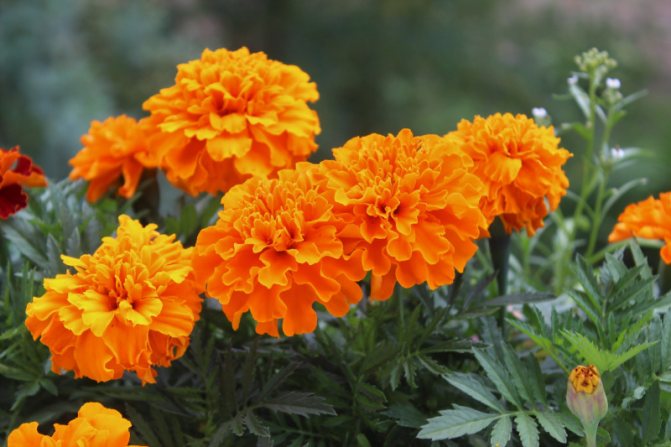

Light and variegated flowers are often grown in gardens and garden beds. Experienced gardeners claim that marigolds effectively repel many pests. Their pungent and specific smell drives away not only mosquitoes, but also some sensitive people.
It can be grown next to tomato and cabbage beds to preserve vegetables. Or drop it near the front door, and then not a single insect wants to come close to the house.
What plants scare away aphids and ants. Protective plants
This category includes not only those satellite plants that scare away insects, but also those that, figuratively speaking, confuse them, confuse them. Many insects search for plants suitable for feeding by smell. For example, earthen fleas and cabbage scoop find cabbage by smell. If you plant strong-smelling plants such as thyme or sage near the cabbage, or sprinkle it with an extract of these herbs, they drown out the smell of the cabbage and make it less attractive to pests. Aromatic herbs confuse pests and protect garden crops with their strong scent. Therefore, it is recommended to plant basil near beans to protect against legume weevil, garlic near roses to protect against aphids, parsley near asparagus. True, the effect of herbs is not always manifested to the same extent.
Plants that repel insects by smell can be classified as repellent (repellent) plants. They include nasturtium, which scares away whiteflies, aphids, Colorado potato beetle, cabbage caterpillars. Bitter wormwood scares off ants, cabbage and carrot flies, apple moth, earthen flea beetles, whitefly; peppermint - ants, aphids, earthen fleas, cabbage caterpillars, whitefly. Aphids do not like the smell of most aromatic herbs, as well as chives, onions, garlic, marigolds, mustard, coriander, fennel. Tansy reduces damage to vegetables by earthen flea beetles and cabbage - cabbage caterpillars. Garlic scares away the larvae of the cabbage fly and the apple moth; the Colorado potato beetle is deterred by catnip, coriander, nasturtium, tansy, marigolds. Tobacco, mint, rue, tansy, medicinal and bitter wormwood, catnip scare off earthen fleas; catnip, nasturtium - green peach aphid; marigolds are some types of nematodes. Oak leaf and bark mulch repels slugs, seed-eating caterpillars and garden beetle larvae. It is recommended to spread this mulch on garden paths and in narrow strips on garden beds. Cucumber grass, or borage, is recommended to be sown between the rows of cabbage of all kinds. It reduces caterpillar damage and wards off slugs and snails with its coarse hairy lower leaves. Overseeding dill with cabbage does not protect it from whitefish and cabbage moth, but it significantly reduces the number of cabbage aphids.
Wormwood
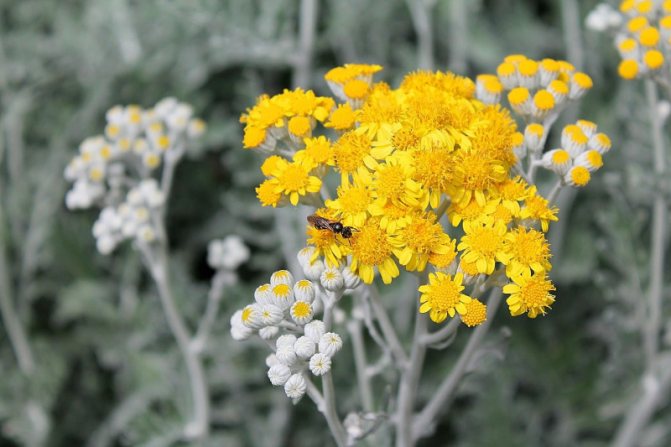

Another representative of the flora with a sharp specific aroma that buzzing bloodsuckers do not like. This perennial plant of green-silver color can grow up to one and a half meters in height. It has long been used by people for medical purposes.
Wormwood grows on forest edges, along roads and in abandoned areas. It is grown commercially for the production of essential oils. They try not to keep it in the gardens, because it is considered a weed. However, many summer residents know about its beneficial properties and try to keep it on the site so as not to go specifically to the forest.
What does a mosquito look like and what it is
Appearance
Mosquitoes belong to the family of Diptera insects to the category of blood-sucking mosquitoes. The sizes of adults can be from 3 mm to 5 cm, depending on the species. The color of the calf also varies. Most often, there are individuals with a black or gray color, but there may be species with an orange, red, yellow or green body. Although insects belong to the dipteran family, they actually have two pairs of wings, one of which has lost its function.
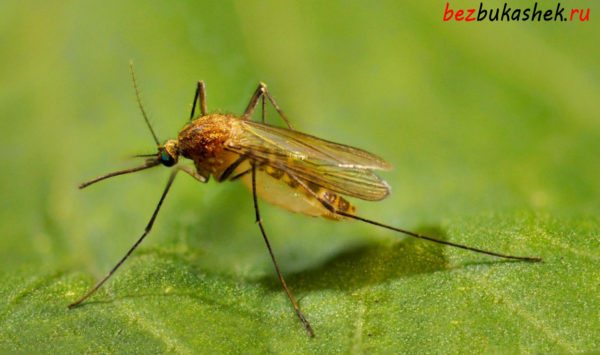

Common mosquito


A feature of these blood-sucking pests is the oral apparatus, which is an elongated long upper and lower lip, which form the so-called sheath.Inside the case there are 2 pairs of jaws with sharp teeth. In females, the oral apparatus is more developed, so they can bite through the skin of a person or animal and drink blood. In males, the jaws are not very developed, therefore they are "vegetarians", that is, they feed only on plant sap.
Reproduction
They belong to insects, which are characterized by complete transformation. Mosquitoes go through four stages of development: egg - larva - pupa - adult. The first three stages take place in water bodies, only adults get to the surface.
The type of mating of these flying insects is called eurygamy, that is, the males huddle in a swarm and wait for the females to fertilize them. Females attract males with a buzz, similar to a squeak, which is generated by the movement of the wings. The female flies into the swarm and is fertilized by the male. After mating, the male returns to the swarm, and the female flies away in search of blood, which is necessary for bearing offspring. It is noteworthy that in urban conditions the type of mating stenogamy is widespread, that is, one by one, since there is no such amount of open space in the city, and it is difficult to form a swarm in such conditions.


Mosquito eggs
The number of eggs in a clutch directly depends on the amount of blood drunk, which is why insects are so aggressive towards humans. In one clutch, the female can lay from 30 to 150 eggs. Eggs are laid on the surface of a reservoir in calm stagnant water with a minimum flow rate, for example, in puddles, ponds, lakes, in thickets of reeds.
After a few days, larvae emerge from the eggs into the water. They look like small, dirty gray worms in squeaks and green or red in derguns. The larvae are food for various animals, birds and fish, therefore such larvae (bloodworms) are used by fishermen as bait. The larvae can live at the bottom of the reservoir, swimming out every 15 minutes for a new portion of oxygen, or they can swim near the surface of the water, sticking out the "tail" of the body into the air, it is there that the respiratory organs of the larvae are located.
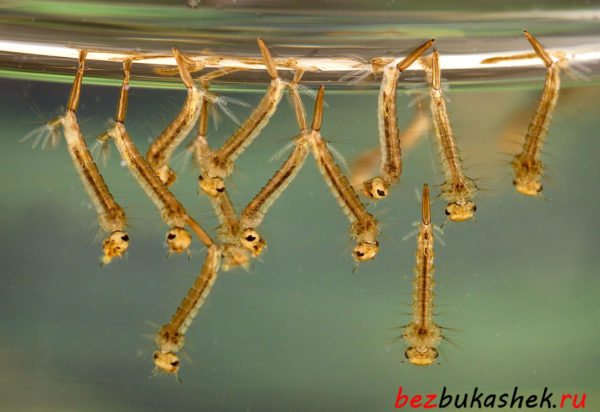

Mosquito larvae
Within 20 days, the larva molts 4 times, shedding the old tight skin, and gradually increasing in size. So, during this time, the body size of the larva can increase 500 times. After the last molt, the larva turns into a pupa. The pupa also lives in the reservoir, periodically rising to the surface for oxygen. The pupa is identical in lifestyle to the larva.
After 5 days, an adult emerges from the larva, which moves to live on land. The life span of males is about 3 weeks, while that of females is about 3 months, however, under unfavorable conditions, the life of pests becomes shorter.
Lifestyle and nutrition
Favorable conditions for living and breeding of pests are warm weather (over 16 degrees) and high humidity (over 80%). However, mosquitoes quickly adapt to unfavorable conditions for them. In temperate climates, insects are active from May to October. In summer, mosquitoes in nature often live near ponds, lakes, swamps and other places with high humidity.
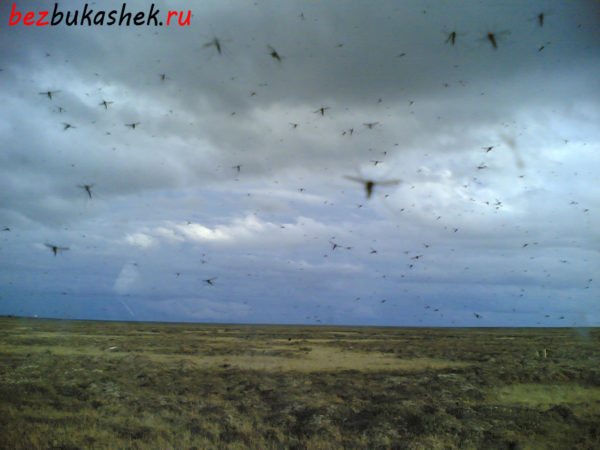

In winter, they move to warm barns where domestic animals live. In urban settings, they live in basements or sewers. When the air temperature is less than 16 degrees, mosquitoes fall into winter hibernation. Thus, the lifespan of females can be extended up to a year.
Many species of mosquitoes are harmless to humans because they feed on plant nectar. But females often feed on blood, which is needed to bear offspring, so bloodsuckers settle next to humans. Bloodsuckers feel the victim with the help of antennae many meters away.
Tansy
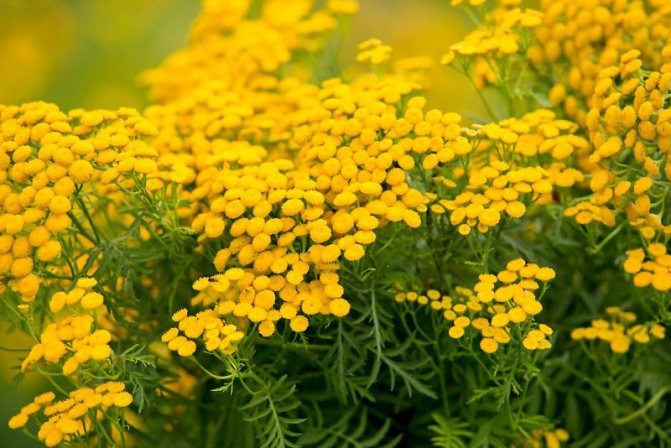

It is a perennial flower that grows in forests and forest-steppe zones and is considered a weed.It spreads quickly over cultivated meadows and pastures, so it must be planted carefully in the garden.
The plant is poisonous. Used in medicine for the treatment and prevention of various ailments. Often, decoctions and tinctures of tansy are used to treat internal organs, it is an antiparasitic agent, a good antiseptic and has anti-inflammatory properties. Tansy has a characteristic pungent odor that Colorado beetles, onion flies, weevils, mosquitoes and ticks hate.
Pelargonium


Pelargonium is better known as geranium. Previously, almost everyone had it on the windowsills. Love for her bright fluffy flowers remained with many grandmothers. The plant has many beneficial properties. From its leaves, infusions are prepared for gargling the throat - it helps with colds, sore throats, runny nose.
The presence of pelargonium near a person already has a beneficial effect. Its smell perfectly repels insects and cleans the air of harmful microbes. Flies, mosquitoes and midges do not like its scent and shy away from the rooms where it is located. This is another reason to put a flower in every room of the house.
What plants scare away pests in the garden. Plants - defenders against garden pests
Phytoncides are often used to protect garden and horticultural plants. At the same time, the method of protection is simple, harmless for beneficial insects, for warm-blooded animals and humans. It is advisable to use it in conjunction with other methods (insect traps, etc.) Phytoncides protect plantings without much care. They quietly do a useful job and sometimes pleasantly diversify the floral decoration of the site.
There is practically no scientific data on the mechanisms of volatile excretion of plants on insects, and so far everything is based on practical experience and the knowledge that phytoncides have a detrimental effect on some pests.
Here are just a few common plants?
Legumes (beans, beans, peas) scare away wireworms, that is, the larvae of click beetles, so named because of the hardness of their integuments. Usually, moles do not settle in areas lined with beans.
Elderberry, planted among gooseberry or currant bushes, protects them from the caterpillars of moth butterflies. Plum trees and apple trees growing near elderberry bushes suffer less from moths - small butterflies from the family of leaf rollers, whose caterpillars damage the fruits. Perennial carnation saves the site from the invasion of the bear.
Helleborus, or hellebore, is a perennial herb from the buttercup family that repels rodents. Where the hellebore grows, there are no harmful insects.
Hemerokallis (daylily) is a beautiful herbaceous perennial that saves many bulbous plants, especially lilies, from millipedes (kivsyaks). Their larvae and adults feed on fallen off parts of plants in summer, and gnaw on bulbs in winter.
Geranium (more correctly pelargonium) growing in your room guarantees protection from aphids and spider mites to all other indoor flowers.
The mustard, planted near the pea beds, protects them from the pea moth. It is also noticed that weeds very rarely appear around the mustard.
Calendula (marigold), growing among asters, protects them from fusarium, a common fungal disease. The causative agent of fusarium remains in the soil for a long time in the form of spores that germinate under favorable conditions. Through the bark, the fungus enters the plant and poisons it with its toxins. Signs of the disease: brown-brown streaks appear on one side of the stem, which then turn into cracks; the plant bends and withers. Calendula also helps fight the nematode. This almost transparent, tiny worm reproduces rapidly in the roots of berry bushes, strawberries and flowers. Plants affected by the nematode usually die. But if, for example, planting roses with a border of marigolds, the flowers will be saved from the nematode.
Hemp protects the beets from the beet flea, and the peas protect the pea aphid. The smell of cannabis scares off the larvae of May beetles, so it is recommended to plant it in the aisles of the shelter belts.
Coriander (kisnitsa) is even better than hemp at repelling pests from fruit trees. It is planted in near-trunk circles and it is recommended to trim the tops weekly - this enhances the release of phytoncides. It is useful to plant coriander among flowers. In particular, it completely protects roses from aphids. If coriander grows in your garden, then mice will not look to you. In autumn, cut coriander stalks should be spread out in rooms that need to be protected from winter visits by mice and rats. There will be no dripping.
Onion. Who has not heard the popular saying: "an onion is from seven ailments"? This is also true of plant ailments. Take, for example, one of the most dangerous fungal diseases of roses - the so-called powdery mildew. Bushes, on which a grayish-white powdery coating of the mycelium of the fungus has appeared, die: shoots stop developing, leaves curl, buds wither. powdery mildew usually appears at the end of June and does not leave flowers alone until late autumn. So, the spring onion and leeks protect roses well from harmful dew. Onions should also be adopted by strawberry lovers, especially those who annually fight with gray rot, which turns the berry into a nasty gray rotten mass covered with the finest fluff. A bunch of onions planted in a garden bed (an onion bush for four strawberry bushes) will greatly reduce the morbidity of berries not only with gray rot, but also with other diseases. Onions will scare away weevils, and ticks, and. wireworms, and other pests. And of course, not only from berries. For example, bud mites do not attack currants if you plant an onion between the bushes and leave it on the ground for the winter.


